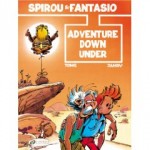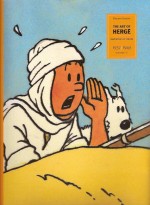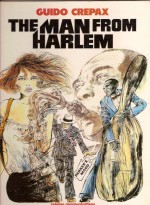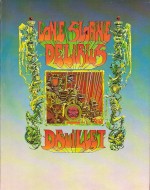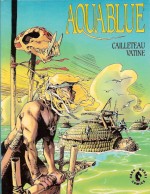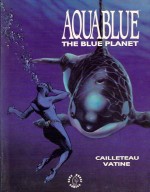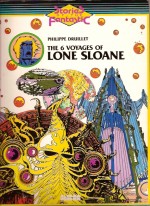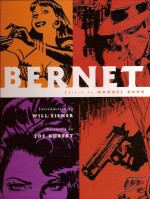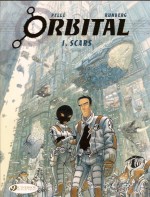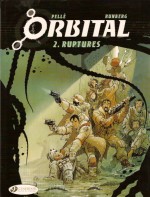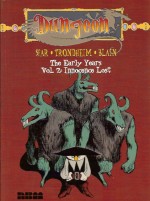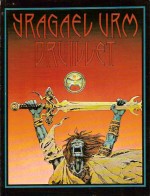
By Philippe Druillet (Dragon’s Dream)
ISBN: 9-063-325210
The fantasy tales of Lone Sloane revolutionised graphic fiction not only in Europe but especially in Britain and America when the baroque and bizarre cosmic odysseys began appearing in the adult fantasy magazine Heavy Metal, which combined original material with the best that “Old World†comics had to offer. By the time French comics collective Les Humanoides Associes launched the groundbreaking magazine Métal Hurlant in 1975, Philippe Druillet, one of their visual and philosophical big guns, had been creating new myths for nearly a decade…
Born in Toulouse in 1944, Druillet was born and raised in Spain, a photographer and artist who started his comics career in 1966 with an apocalyptic science fiction epic Le Mystère des abîmes (The Mystery of the Abyss) which introduced the doom-tainted Earthling, intergalactic freebooter and wanderer called Lone Sloane in a far distant future: a tale heavily influenced by HP Lovecraft and A.E. Van Vogt. Later influences included Michael Moorcock’s doomed anti-hero Elric (and I’m pretty sure I can see some Jack Kirby and Barry Windsor-Smith also tinting the mix…)
He began working for Pilote in 1969, and revived his mercurial star-rover for a number of short pieces which were first gathered together as a graphic novel in 1972. Prior to the large scale (310mm x 233mm) 1991 collection from NBM (see The Six Voyages of Lone Sloane and the later compilation Lone Sloane: Delirius).
Following these early epics he further stretched himself with the astounding, nihilistic, “End of Days†cosmic tragedies of the doomed prince Yragael and his child of ill fortune Urm.
Readers of Moorcock, August Derleth and particularly Jack Vance will recognise shared themes in the woeful tale of the last times of Earth where declining humanity is beset by gods and demons keen on recovering their lost power, on a blasted planet where men still intrigue and kill each other for gain. From this guttering chaos arises Yragael, a potential messiah who founders and falls due to pride and a ghastly liaison with the dire Nereis, witch queen of the living city Spharain…
One hundred years later in the devastated wastelands of the world, the grotesque hunchbacked spawn of that illicit union falls under the spell of mendacious demons and attempts to reclaim both parts of his heritage. Urm is stupid but passionate and his cataclysmic visit to the horrendous city reveals that the Last Men are just as much playthings of the gods as the monstrous bastard himself…
This is a graphic odyssey of utterly Byzantine narrative and Brobdignagian, baroque scale and scope. The storytelling is reduced to the merest plot, as the text (more pictorial accoutrement than dialogue facilitator) and art goes into emotional overdrive. This isn’t a tale told, it’s a mesmerising, breathless act of graphic expression. If it helps think of it as ballet or a symphony rather than a novel or play: you’re supposed to go “wow!†not “a-ha!â€
The visual syntax and techniques originated in these non-stories dictated the shape of science fiction – especially in movies – for decades. Character and plot are again pared to pure fundamentals so that Druillet could fully unleash the startling graphic innovations in design and layout that churned within him, and which exploded from his pen and brain.
His brand of universal Armageddon achieved levels of graphic energy that only Jack Kirby has ever equalled, and this is another work crying out for re-release in large format with all the bells and whistles modern technology can provide, but until that distant tomorrow this book will have to do – and do very well.
Luckily for you it’s still widely available and remarkably inexpensive…
© 1974 Philippe Druillet/Dargaud Editeur. © 1975 Philippe Druillet/Dargaud Editeur. All rights reserved.

